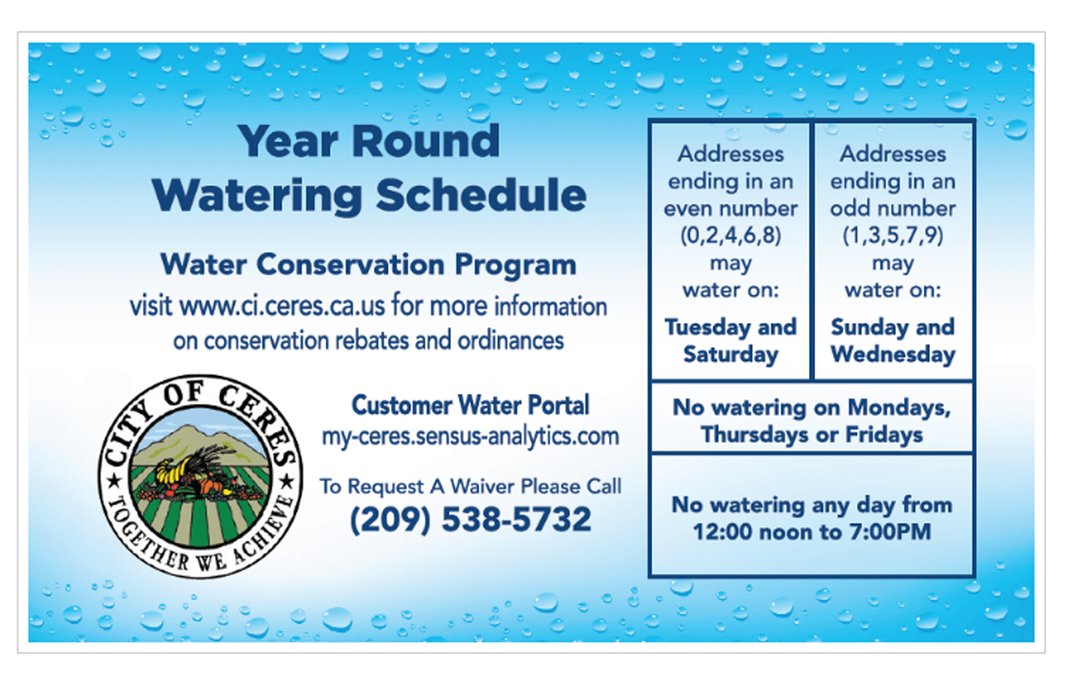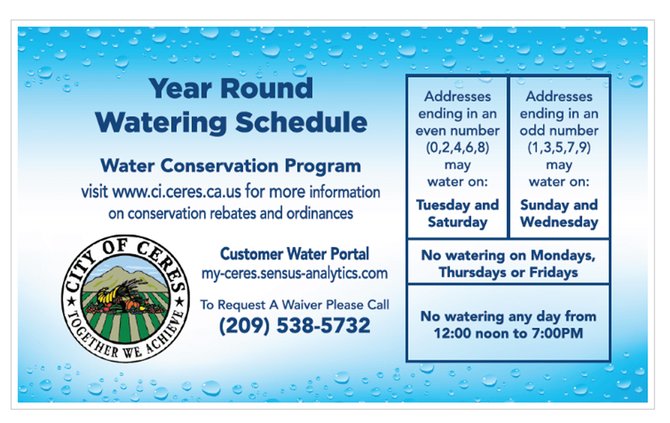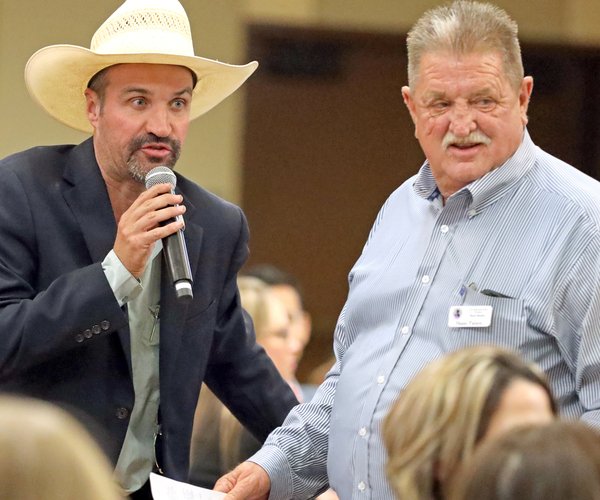It doesn’t appear that Ceres will be easing up on watering restrictions by adding a third watering day to a week like in Modesto.
In answer to a councilmember’s request to look into a possible third watering day per week resulted in Public Works Director Sam Royal explaining why it would jeopardize Ceres’ ability to meet state water conservation targets.
In 2009 the state Water Conservation Act set a goal of cities reducing water consumption by 20 percent by the year 2020. Ceres surpassed that target using just over 2,151 million gallons of water compared to the state target cap of 3,591 million gallons.
In 2020, during emergency drought restrictions, Gov. Gavin Newsom asked Californians to voluntarily reduce the use of water by an additional 15 percent and Ceres, while unable to reach that level, managed to save an average of 2.5% between 2021 and 2024, about 54 million gallons per year.
“Since then, the state shifted away from the target based water use and moved to what’s called the ‘objective base use,’” said Royal. “Senate Bill 606 and Assembly Bill 68 created the framework for making water conservation in California a way of life, which aims to create a more efficient and sustainable water management system.”
The state Water Resources Control Board and the Department of Water Resources now determines standards to govern water use. Under this program, water suppliers now are held to a water use objective, representing the volume of water a community would have to use if operating at a maximum efficiency. For fiscal year 2024-25, Ceres’ actual water use is determined to be an estimated 1,921 million gallons while the water use for the same period was expected to be about 2,019 million dollars.
“That means we’re roughly 98 million gallon under the high efficiency objective, a cushion that gives us the flexibility for emergency and/or unexpected demand. However, if the third water day were added to our year round watering schedule, we project an increase of nearly 97 million gallons per year. That will leave us with only about one million gallons of surplus. To put that into perspective, a single golf course can use a million gallons in one night of irrigation – that is equivalent to nearly one to two Olympic sized swimming pools.”
Royal added that beginning in 2027, if water suppliers are not demonstrating compliance with the urban water use objective, the state Water Resources Control Board can issue fines of up to $1,000 a day, and up to $10,000 per day during a declared drought emergency.
He said given California’s moves for stricter efficiency objectives, the upcoming compliance headlines and the potential of significant fines, he did not recommend adding a third water day.
Otero drilled down, wanting to know who sets the water compliance target. She was told each city is evaluated for that number.
“We don’t know what the next year’s number is going to be until this year is complete and then they’ll create a number for the following year,” said Joshua Casas.
Otero wondered if a third watering day could be offered in the hotter summer months. Saying that summer water consumption citywide can be up to five million gallons per day as opposed to three million in the winter, Royal recommended “to leave it the way it is.” He added the confusion it would cause residents to switch back and forth between seasons.





